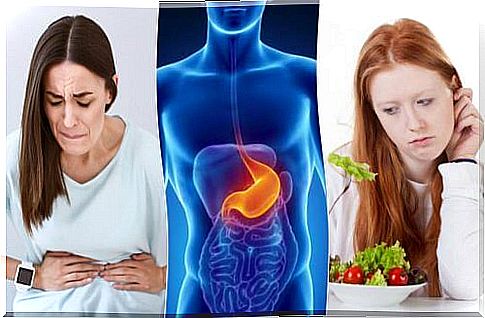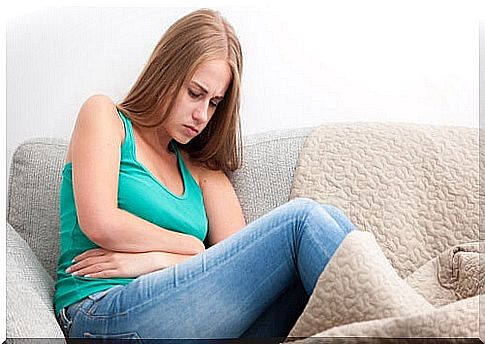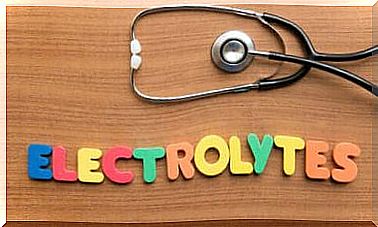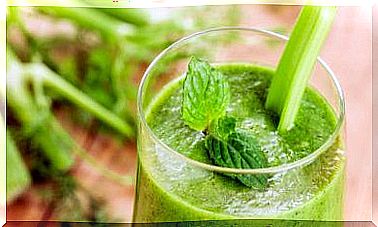8 Notorious Symptoms Of Stomach Ulcers
Identifying these symptoms early is essential in order to get early diagnosis and treatment, and thus prevent the ulcer from getting worse and worse. does not affect the quality of life.

Stomach ulcers, also known as peptic ulcers, are deep injuries to one or more areas of the lining that protects the stomach.
Ulcers occur when the production of acidic juices increases. These juices irritate the lining of the stomach and cause a burning sensation and pain.
Their onset is associated with excessive consumption of certain inflammatory foods, but the main cause is infection with the H. pylori bacteria.
People who smoke and drink alcohol have stomach ulcers more frequently than others because toxins and chemicals tend to weaken the lining of the stomach.
Quickly detecting symptoms is essential for treatment, as this will prevent the lesion from getting bigger and causing digestive complications.
It is therefore essential to know how stomach ulcers manifest themselves, and to consult a doctor if you identify these symptoms.
1. Abdominal pain

Abdominal pain is one of the main symptoms of ulcers that form in the lining of the stomach.
- The intensity of pain can vary from mild to chronic, especially when the patient consumes irritating foods and when they go several hours without eating.
- These pains occur in the upper part and the central part of the abdomen, and can extend to the ribs.
2. Abdominal inflammation
Abdominal inflammation is a common symptom of the majority of infections of the digestive system.
- In this case, it is a noticeable swelling of the stomach, usually accompanied by pressure and a feeling of heaviness.
- This inflammation is the body’s reaction to the attacks caused by the excess production of acidic juices.
3. Recurrent indigestion
Although indigestion includes the two previously mentioned symptoms, it is still important to separate this symptom, as it also causes a feeling of heaviness and gas.
- In case of stomach ulcer, indigestion is common, because damage to the stomach causes burning and pain when consuming acidic and copious foods.
- It is common for ulcers to cause belching and stomach pain, almost every time immediately after a meal.
4. Loss of appetite
Due to the inflammatory reaction that occurs after eating, many ulcer patients end up losing their appetite.
- The fear of feeling burns and pain following a meal causes patients to suffer from inappetence.
- This symptom leads to serious consequences, as it leads to the development of nutritional deficiencies.
5. Nausea

Nausea is not just a symptom of pregnancy or gastritis.
This unpleasant urge to vomit is also the result of excess acidic juices which irritate the lining of the stomach.
- When the lesion occurs (the ulcer), it causes a disruption of the balance between the means of defense and the stressors of the stomach, thus generating this symptom.
6. Food intolerances
As the lining of the stomach is weakened by ulcers, it is very likely that the patient suffers from food intolerances.
- The inflammatory components of some ingredients tend to make the patient’s condition worse by causing severe pain and digestive symptoms.
- This occurs almost every time immediately after a meal, and interferes with the day’s activities.
- Generally, these are intolerances to foods high in fats, sugars or pungent components.
7. Excessive weight loss

The weight loss observed in patients with stomach ulcers is related to the inappetence caused by the disease.
- Affected people stop eating appropriately. They consume fewer calories and nutrients, which causes noticeable weight loss.
- It is a symptom that requires a lot of attention. Indeed, in addition to a decrease in fat, it significantly reduces muscle mass.
- This symptom requires a full medical analysis. It can also be the cause of other chronic diseases such as cancer.
8. Bleeding
The presence of blood in the stool or vomit indicates that the ulcers are getting bigger.
- Few patients have this symptom, as it manifests itself in the advanced and severe state of the disease.
- However, if this symptom appears, it is essential to go to a doctor, as it indicates health complications.
- This symptom can also be a warning signal for chronic digestive diseases such as stomach or colon cancer.
The detection of several of the symptoms noted here is reason enough to urge you to go to the doctor as soon as possible.
Once diagnosed, it is essential to improve your eating habits and to consume foods that help neutralize the action of acids.
It is also essential to drink plenty of water to repair the affected tissue.









